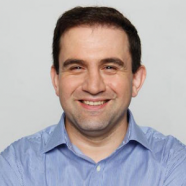 David Godler, PhD Murdoch Children’s Research Institute in Melbourne, Australia
David Godler, PhD Murdoch Children’s Research Institute in Melbourne, Australia Newborn Screening for Angelman syndrome, Prader-Willi, Fragile X and Dup15q Syndromes
Summary of Dr. Godler Study
In a pilot study, Associate Professor David Godler from the Murdoch Children’s Research Institute in Melbourne, Australia, will screen 75,000 newborns, establishing the feasibility of the test for large-scale screening.
“Newborn screening means families with loved ones with Angelman, Prader-Willi, Fragile X and Dup15q syndromes find a diagnosis in weeks instead of years, avoiding a painful diagnostic journey. And, if we can diagnose individuals earlier, we have the best chance of reversing the effects and improving their quality of life much sooner,” says Eileen Braun, Executive Director of the Angelman Syndrome Foundation and mother to a young woman with Angelman syndrome (AS). “Research, including studies funded by the ASF, is moving quickly toward therapeutics and a cure for AS, and experts are now pinpointing the optimal window for applying a cure. The sooner we can diagnose, the sooner we can apply life-changing treatments.”
“Having a cost-effective test to accurately diagnose these syndromes in the newborn period is key to ensuring that families receive optimal medical care and support,” adds Theresa Strong, Director of Research Programs for FPWR. “The study will validate the newborn screening tool so that, once approved for use, it can be used to screen all babies in the newborn period.”
“This would allow individuals to have standard-of-care therapies right from the beginning,” says Dr. Jessica Duis, MD, MS, Director of the Comprehensive Angelman Syndrome and Prader-Willi Clinics at Vanderbilt University Medical Center. “For example, for Prader-Willi Syndrome (PWS), this means growth hormones and early intervention therapies that we know from experience have huge benefits.”
When available, life-changing therapeutics and a cure for AS could be implemented within the first weeks of life.
Current rates of incidence of PWS and AS vary widely from 1:12,000 and 1:30,000 live births. The study will also help understand the true incidence and full spectrum of these disorders in the population.
AS in particular is often not diagnosed until individuals are between one to three years of age and delays are noted, significantly delaying therapies and creating stress and hardship for families.





